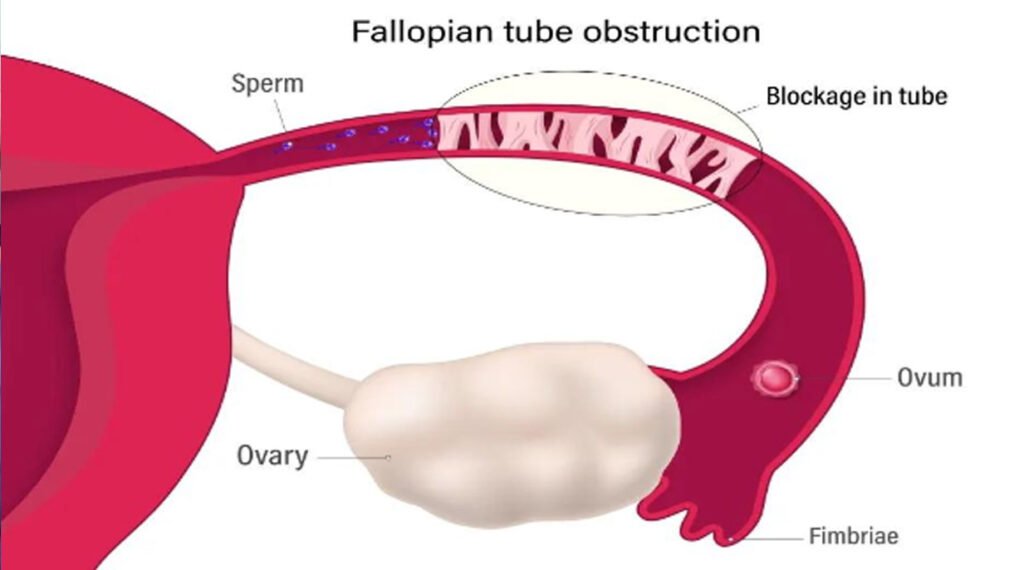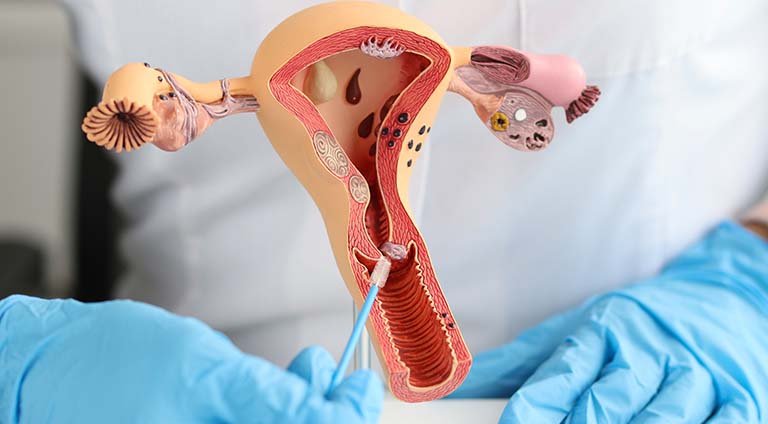Fallopian tubes-
A pair of thin tubes, one on each side of the uterus, that carry the egg from the ovaries to the uterus.
How does fallopian tubes gets blocked?
The most common cause of blocked fallopian tubes is pelvic inflammatory disease (PID). Other potential causes include:
- Current or history of an STD infection specifically chlamydia or gonorrhea
- History of uterine infection caused by an abortion or miscarriage
- Endometriosis or fibroids can be associated with blockages.

How to diagnose blocked fallopian tubes?
Blocked tubes are usually diagnosed with a specialized x-ray called a hysterosalpingogram (HSG). This test involves placing a dye through the cervix using a tiny tube, taking x-rays of the pelvic area and all is normal if the dye runs through the uterus. If the dye doesn’t get through the tubes, there is a blockage. It’s important to know that 15 percent of women have a “false positive,” so sometimes the Doctor will need to run this test twice. Other tests may include ultrasound, exploratory laparoscopic surgery, or hysteroscopy (where they take a thin camera and place it through your cervix to look at your uterus).
Can You Get Pregnant With Blocked Fallopian Tubes?
The possibility of getting pregnant with blocked fallopian tubes depends on several factors, including the extent and location of the blockage and whether one or both tubes are affected. If only one tube is blocked, it may still be possible to conceive naturally using the other unblocked tube. If both tubes are blocked, natural conception is unlikely, and fertility treatments (IVF) are often recommended.
HOW TO REMOVE BLOCKAGE OF FALLOPIAN TUBES?
Tubal cannulation uses two types of surgical procedures called hysteroscopy and laparoscopy. A narrow tube outfitted with a camera and light source is inserted into the womb through a small incision of the abdomen. Next, a thin wire (cannula) is guided through the Fallopian tube, creating an opening and clearing blockages. Once complete, a dye is sent through the womb to see if it can pass through the Fallopian tubes without being deterred. If it flows freely, the surgery is a success.
HOW DOES IVF BYPASS BLOCKED FALLOPIAN TUBES
IVF mimics nature. It bypasses the entry of the sperm in the vagina, uterus and the fallopian tubes. The fertilisation is performed in the warmth of the laboratory incubator instead of the fallopian tube. Once the embryo is ready it is placed back into the mother’s womb by the IVF specialist in the same place in the uterus where it would have implanted in natural circumstances.
For patients with blocked Fallopian Tube, IVF is a boon with highest pregnancy rate as it is bypasses the tube. For those looking for treatment of blocked fallopian tubes, Janam Test Tube Baby Centre Kangra offers comprehensive care and solutions to address fertility challenges. For any query please feel free to connect with us.




